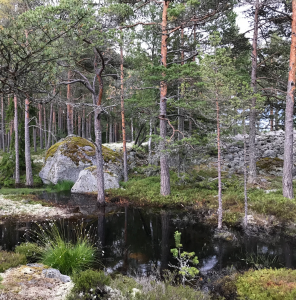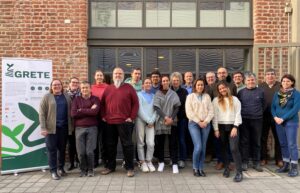We’ve already talked about ionic liquids and their application in the GRETE project in a previous article. This time, the work of our consortium member Prof. Ilkka Kilpeläinen and his team of the Sustainable Chemistry research group at University of Helsinki is going to be presented in more detail. Actually, the researchers themselves explain their activities in a short video-portrait: research assistant Wille Kilpeläinen, who joined Prof. Ilkka Kilpeläinen’s group a year ago – yes, they do have the same surname but no, they’re not relatives – walks the viewer through the facilities of the chemistry department providing a well structured overview about the research activity, while introducing the team members and their specific research-area.
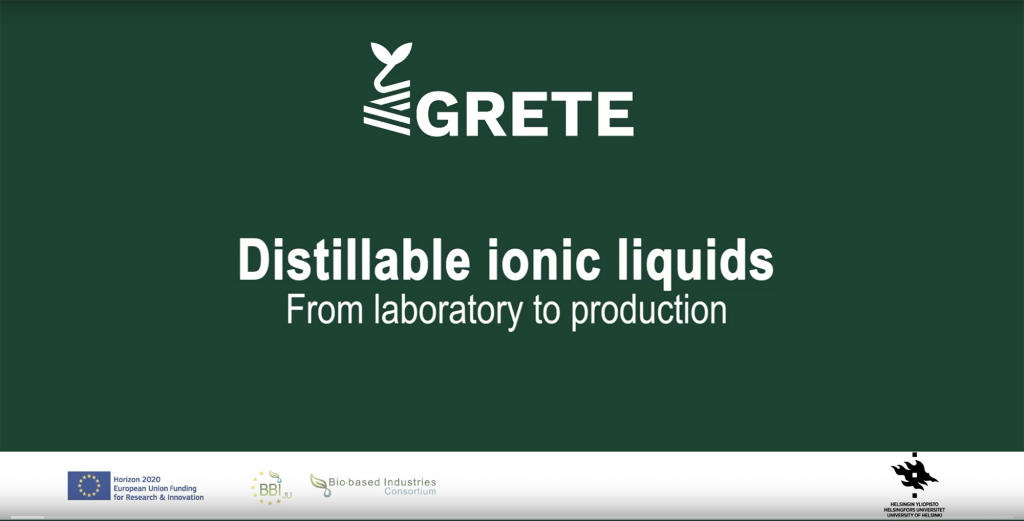
Research group leader Prof. Ilkka Kilpeläinen introduces the focus of the Sustainable Chemistry group that is working on cellulose dissolution, where cellulose means: paper pulp, cotton clothes, yesterday’s newspaper or anything related to cellulose. The goal of the research group is to bring superbase ionic liquids for cellulose dissolution to industrial scale, thus drastically impacting on how man-made cellulose fibres (MMCF) will be manufactured in the future. The great news is the research group is on a good path: starting their investigations at the beginning of GRETE working with small amounts of molecules, they are now able to easily work with higher quantities obtaining important structures. Besides doing the organic synthesis, the experts are also characterising the molecules in terms of costs, efficiency in supply, their safety or toxicity and other parameters relevant for scaling up the process.
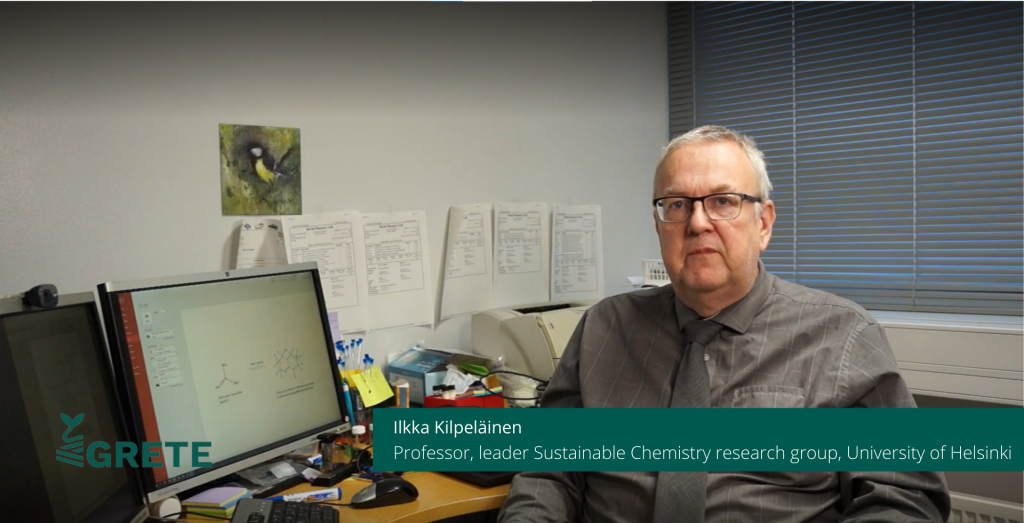
Eva Gazagnaire, 2nd year PhD Student, focuses on the synthesis and design of the superbase used in the ionic liquids. She gives an interesting glimpse into the creative aspects of chemistry that basic research offers, against all preconceptions of scientific disciplines. In a very clear way, she explains how to design different derivatives from a reference molecule, selecting the best derivatives based on the characteristics needed to improve the superbase, which then can be tested, characterised and scaled up.
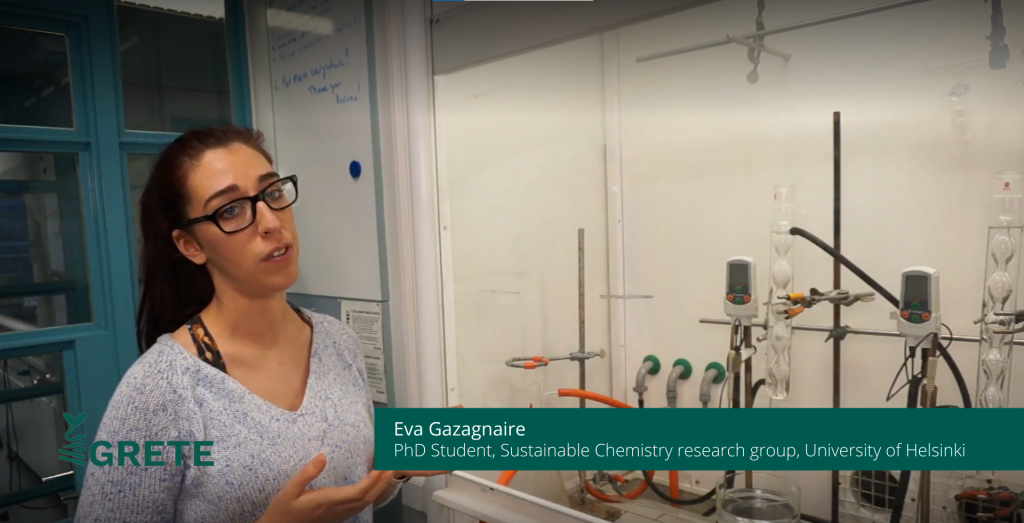
Next, research assistant Sini Santasalo uses her creativity to illustrate in a very effective manner how she executes ecotoxicity measurements for the superbase ionic liquids with bioluminescent bacteria. These measurements are needed to confirm the harmlessness for the environment, which is a crucial factor in enabling sustainable, techno-economically viable production of high-quality cellulose-based textile fibres through green chemicals and technologies: the ambitious goal the GRETE partners are aiming for.
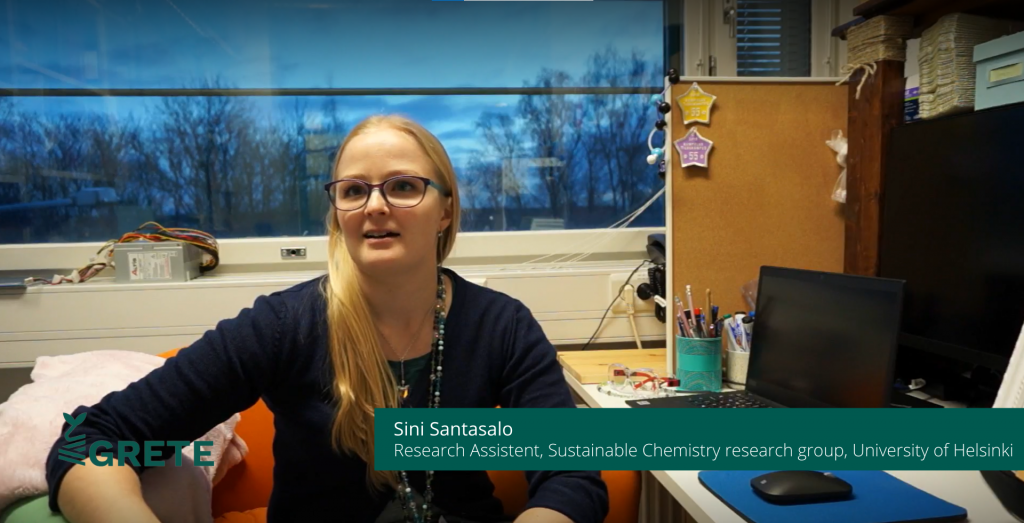
On the other hand, PhD Student Jussi Helminen goes more into detail about the equipment used for preparing the superbase. The current setup available at the facilities of University of Helsinki’s chemistry department is quite surprising, and not at all given for granted at a Higher Education Institution, as the researcher points out. Moreover, often there are doubts about the viability to use ionic liquids for industrial purposes referring to costs, in this regard the researcher highlights that the materials used to produce the superbases are not very expensive and the ionic liquids produced are distillable and can be purified, three important factors that make their production industrially viable.
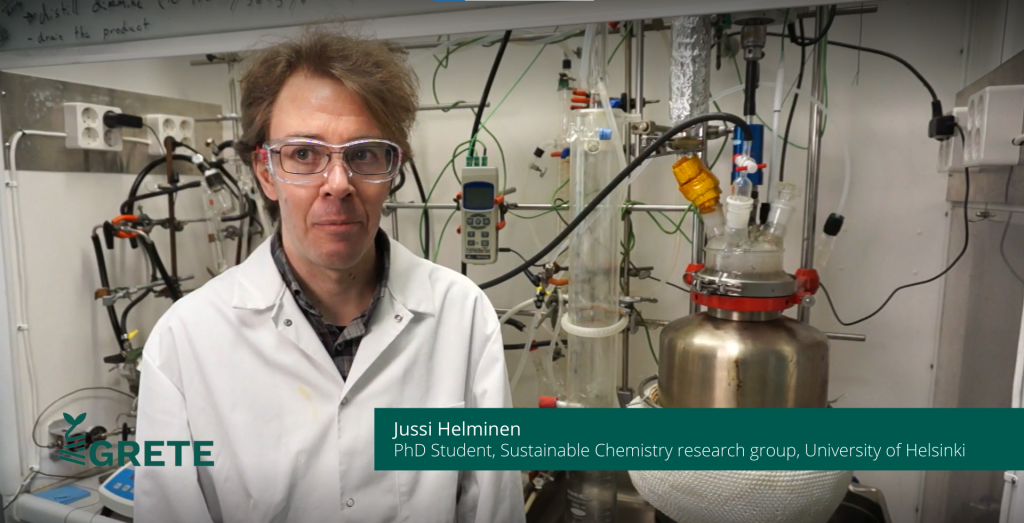
Last but not least, Wille Kilpeläinen illustrates his work on continuous flow processes: a fully functional pilot reactor capable of producing at least 1kg per hour of superbase has been set up. The first step of the two-step process to synthesise the superbase is made with a combination between distillation and a plug-flow reactor that provides a product that is pure enough to be used directly in the next step of the process. Furthermore, the outcomes so far promise to achieve much higher throughput as parameters still need to be optimised.
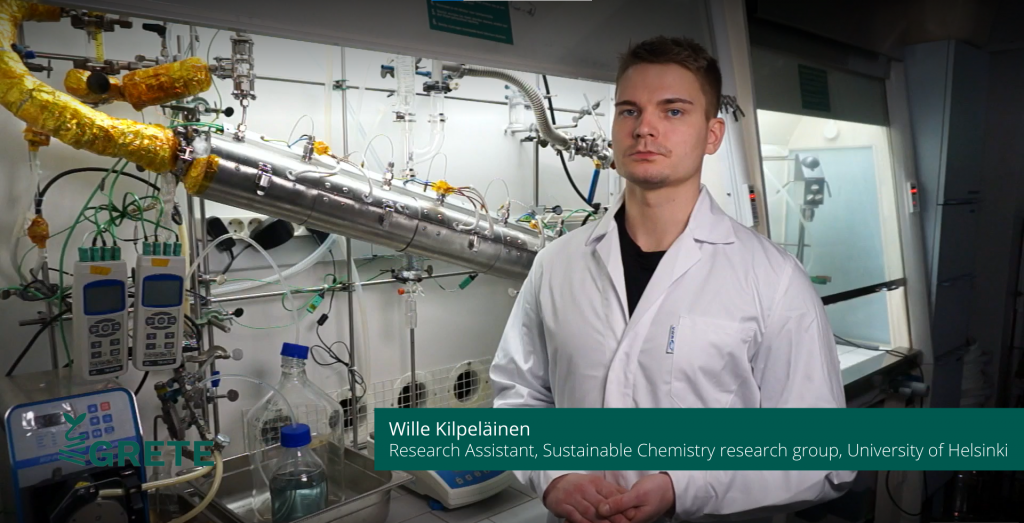
Intrigued by this fantastic research work? The video is part of the GRETE “talking heads” series available on the website download page here and YouTube channel.
Keep on following the GRETE activities via our social media and subscribe to the newsletter.
